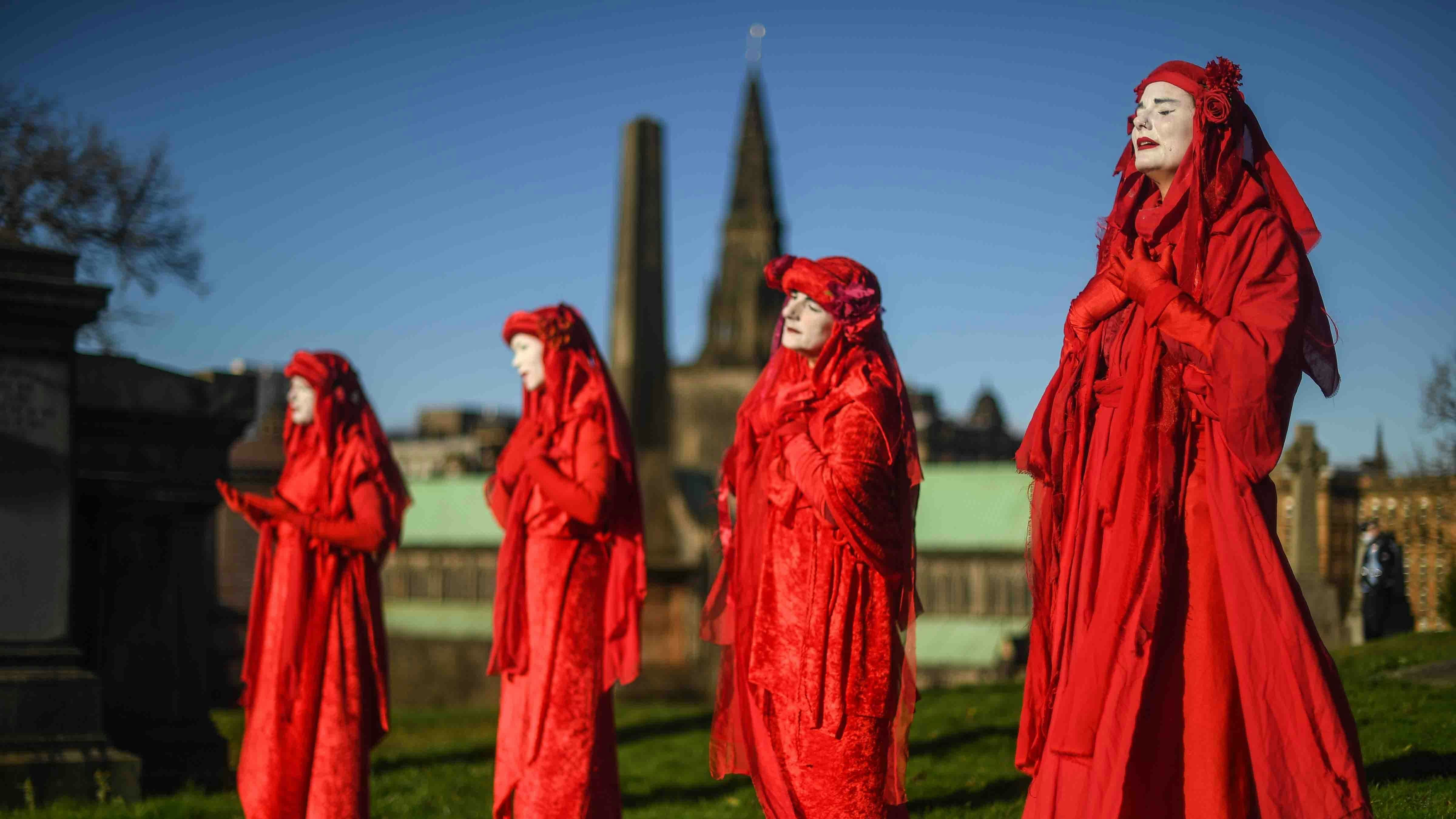Concerns about a changing climate are not a modern phenomenon. There was another time when climate change spurred widespread worry, and there are some rather striking parallels to our world today.
During what’s called the Little Ice Age, Europe experienced a period of severe global cooling, which brought down upon the continent bitterly cold winters. This period lasted from about 1300 to 1850.
During this time, expanding glaciers destroyed farms and villages throughout the Swiss Alps. The Baltic Sea froze over twice.
In 1658, a Swedish army marched across a wide strait in Denmark known as the Great Belt.
The River Thames in London frequently froze over and a fair was held during the coldest years, with people sledding and ice skating along the river. One eye-witness account from 1688 describes the river as being so thoroughly frozen that it served as a long street where shops were set up.
This change in climate was often blamed on humans — specifically sinners, which included everyone to one extent or another. The religious authorities of the era promoted the idea that an angry God was punishing everyone with bad weather.
Though they didn’t call it climate change back then, many people believed that stopping the bad weather that had befallen the human race demanded everyone show more devotion to the faith.
This is the thinking that led to the European witch hunts. The idea was that if we burned enough of the worst offenders, most of whom were women, we could make bad weather go away. That was the theory anyway.
Alas, the climate did change, as the climate has done naturally since the formation of the atmosphere, and global temperatures rose again.
Chances are, witch burning had nothing to do with the increased warmth and carbon dioxide levels could not have driven a greenhouse effect in the mid 19th century.
In these modern times, being much wiser and more sophisticated, we have moved beyond these silly superstitions. We have a much more rational understanding of the world today.
Just kidding.
Actually, a very large contingent of people today still cling to the archaic belief that mankind’s sins cause bad weather. It’s just been updated for this modern world.
There is a widespread consensus that carbon dioxide emissions are impacting climate. From there, the science is filled with uncertainty and nuance, especially when it comes to the relationship between carbon dioxide emissions and extreme weather.
Climate activism just ignores all that uncertainty and appropriates the science as gospel for a modern religious movement. The planet is warming because of the sin of burning fossil fuels, according to this faith. To do so is not only immoral, the devout say, it’s going to result in climate Armageddon. They don’t use those words, but that is the gist of the rhetoric.
Some of the followers of this faith are scientists themselves. University of Pennsylvania climatologist Michael Mann regularly denounces those who doubt his climate faith as “simply awful human beings.”
Mary Robinson, a former UN high commissioner, asserted a few years ago that those who doubt her faith are not just people who happen to disagree with her. In a speech that praised crusaders like Swedish activist Greta Thunberg, Robinson argued that climate science is a gospel that is beyond any question. Those heretics who dare to question the Word of Science she called “malign and evil.”
Just as the people of 16th century Europe found witches in every bad harvest or climate calamity, climate activists today find signs of the devil’s work in literally everything.
Besides blaming every bad weather event on climate change, even when the evidence says otherwise, signs that the devil walks among us include: dangerous fungus, lowered immune response, poor emergency response systems, dying Irish, accelerated evolution, bad credit, pesky fire ants, the dead rising from their graves, a national blood shortage, running out of beer, birds getting smaller, birds getting larger, kids getting fat, home runs, earthquakes, divorces, bad dogs and hair loss.
This list is by no means comprehensive, and it illustrates that this isn’t a movement of science. It’s a superstition taking random events and imposing their preferred causality upon it as a means to affirm their faith.
To show their piety, climate activists also have a number of rituals, including vows of poverty.
And while there haven’t been any suggestions (yet) that we should burn at the stake those who doubt the climate change faith, also called “climate deniers,” some climate crusaders, such as Robert F. Kennedy Jr., have said the heretics should face criminal sanctions, including jail time.
Meanwhile, there is a widespread, aggressive litigation effort to persecute oil companies for daring to produce a product that people willingly buy. People not only happily buy and use fossil fuels at ever increasing rates, they get very upset if the price gets too high.
Our Founding Fathers lived during the strife-filled Little Ice Age and saw all the religious hysteria that came out of it. It should be no surprise they put freedom of worship at the top of the list of rights the government can’t touch. Though it’s not explicitly stated, the First Amendment has been interpreted to be a clause separating church and state.
Yet, climate activists have been quite successful in advancing their religion through the state with massive subsidies to monuments meant to ward off the evils of climate change. Their goal for a New Babylon, also known as net zero, is not only going to cost us dearly, it’s entirely unworkable.
History will look back on this period and wonder how such an advanced civilization could have let a superstitious hysteria run amok. Yet here we are again, watching history repeat itself.
Guest columnist Kevin Killough is a former Cowboy State Daily reporter who writes about energy for Just The News.





